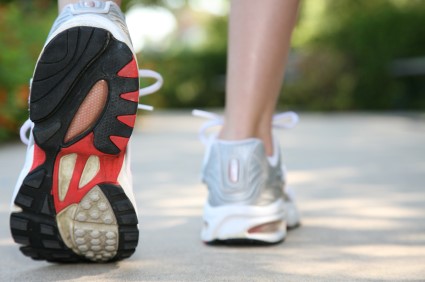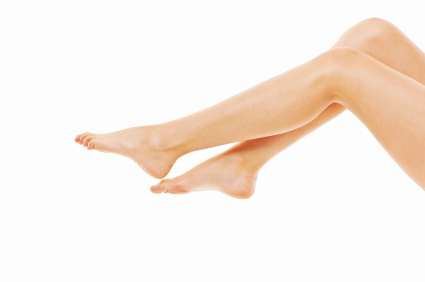Blog
Identifying Bunions
 Bunions can be described as growths that form at the base of your big toe, usually caused by changes to our foot’s bone structure, such as ill-fitting shoes, flat feet, or genetics. Bunions are also known as hallux valgus, and are more common among women than in men. Properly-fitting shoes can help alleviate pain or irritation caused by bunions, and it is best to see your doctor to diagnose your condition and treat it. Other methods for treating bunions involve shoe inserts, supporting the feet through taping or splinting, and cortisone injections.
Bunions can be described as growths that form at the base of your big toe, usually caused by changes to our foot’s bone structure, such as ill-fitting shoes, flat feet, or genetics. Bunions are also known as hallux valgus, and are more common among women than in men. Properly-fitting shoes can help alleviate pain or irritation caused by bunions, and it is best to see your doctor to diagnose your condition and treat it. Other methods for treating bunions involve shoe inserts, supporting the feet through taping or splinting, and cortisone injections.
Bunion surgery usually occurs after non-surgical methods have proved to be ineffective. If you have any concerns,consult with Dr. Michael E. Newman of Pennsylvania. Our doctor will assist you with all of your foot and ankle needs.
What is a Bunion?
A bunion is formed of swollen tissue or an enlargement of boney growth, usually located at the base joint of the toe that connects to the foot. The swelling occurs by the bones in the big toe shifting inward, which impacts the other toes of the foot. This causes the area around the base of the big toe to become inflamed and painful.
Why do Bunions Form?
- Genetics – susceptibility to bunions are often hereditary
- Stress on the feet – poorly fitted and uncomfortable footwear that places stress on feet, such as heels, can cause bunions to form
How are Bunions Diagnosed?
Doctors often perform two tests – blood tests and x-rays – when trying to diagnose bunions, especially in the early stages of development. Blood tests help determine if the foot pain is being caused by something else, such as arthritis, while x-rays provide a clear picture of your bone structure to your doctor.
How are Bunions Treated?
- Refrain from wearing heels or similar shoes that cause discomfort
- Select wider shoes that can provide more comfort and reduce pain
- Anti-inflammatory and pain management drugs
- Orthotics or foot inserts
- Surgery
If you have any questions please feel free to contact our offices located in Plymouth Meeting and Ambler, PA. We offer the newest diagnostic tools and technology to treat your foot and ankle needs.
Tips for Running Safely and Preventing Injuries
 According to greatist.com, there are some tips to follow for those who are avid runners, especially for avoiding injuries. If you plan on preparing for a marathon, gradually break into a running routine and make sure to incorporate training into your schedule. Stretching is also important for ensuring that your muscles don’t become too strained or overstressed. Don’t forget to take breaks and rest in between your training. Make sure to invest in more than just one sturdy pair of running shoes, see a doctor if you’re experiencing any pain in your feet, stay hydrated, and be aware of your pronation style to avoid injury.
According to greatist.com, there are some tips to follow for those who are avid runners, especially for avoiding injuries. If you plan on preparing for a marathon, gradually break into a running routine and make sure to incorporate training into your schedule. Stretching is also important for ensuring that your muscles don’t become too strained or overstressed. Don’t forget to take breaks and rest in between your training. Make sure to invest in more than just one sturdy pair of running shoes, see a doctor if you’re experiencing any pain in your feet, stay hydrated, and be aware of your pronation style to avoid injury.
Runners can still be prone to running injuries even with proper precautions. For more information about treatment, consult with Dr. Michael E. Newman of Pennsylvania. Our doctor will assist you with all of your foot and ankle needs.
How to Prevent Running Injuries
Many common running injuries are caused by overuse and overtraining. When the back of the kneecap starts wearing out and starts causing pain in your knee, this is commonly referred to as runner’s knee. Runner’s knee is a decrease in strength in your quadriceps and can occur if you’re not wearing properly fitted or supporting shoes. To prevent runner’s knee, focusing on hip strengthening is a good idea, as well as strengthening your quads to keep the kneecaps aligned.
What Are Some Causes of Running Injuries?
- One cause of a common running injury is called iliotibial band syndrome.
- Plantar fasciitis is also another common injury.
- Stress fractures can occur from overtraining, lack of calcium, or even your running style.
Best Ways to Prevent Running Injuries
- Wear footwear that fits properly and suits your running needs.
- Running shoes are the only protective gear that runners have to safeguard them from injury.
- Make a training schedule. Adding strengthening exercises as well as regular stretching can help keep you strong and limber and can lessen the possibility of injuries.
- Stretching keeps muscles limber, this will help you gain better flexibility.
If you have any questions please feel free to contact our offices located in Plymouth Meeting and Ambler, PA. We offer the newest diagnostic tools and technology to treat your foot and ankle needs.
Keon Hatcher Reveals he had Foot Surgery on Social Media
 Keon Hatcher, Arkansas receiver, revealed in a Snapchat video in late April that he had required surgery for his broken foot, which he was the same foot he had broken previously last year. His status at the time was unknown, but Hatcher had broken his foot previously in the Toledo game. He had to have surgery last September, officially ending his season for the year.
Keon Hatcher, Arkansas receiver, revealed in a Snapchat video in late April that he had required surgery for his broken foot, which he was the same foot he had broken previously last year. His status at the time was unknown, but Hatcher had broken his foot previously in the Toledo game. He had to have surgery last September, officially ending his season for the year.
A broken foot requires immediate medical attention and treatment. To learn more, consult with Dr. Michael E. Newman of Pennsylvania. Our doctor will assist you with all of your foot and ankle needs.
Broken Foot Causes, Symptoms, and Treatment
A broken foot is caused by one of the bones in the foot typically breaking when bended, crushed, or stretched beyond its natural capabilities. Usually the location of the fracture indicates how the break occurred, whether it was through an object, fall, or any other type of injury.
Common Symptoms of Broken Feet:
- Bruising
- Pain
- Redness
- Swelling
- Blue (foot)
- Numbness
- Cold
- Misshapen
- Cuts
- Deformities
Those that suspect they have a broken foot shoot seek urgent medical attention where a medical professional could diagnose the severity.
Treatment for broken bones varies depending on the cause, severity and location. Some will require the use of splints, casts or crutches while others could even involve surgery to repair the broken bones. Personal care includes the use of ice and keeping the foot stabilized and elevated.
If you have any questions please feel free to contact our offices located in Plymouth Meeting and Ambler, PA. We offer the newest diagnostic tools and technology to treat your foot and ankle needs.
Treating Your Cracked Heels
 There are many different reasons as to why cracked heels may develop. Cracked heels can become irritated, painful, and itchy, often caused by dry skin, standing for long periods, medical conditions such as athlete’s foot, aging, and other factors. It’s important to treat your cracked heels so they don’t impact your walking or lead to further inflammation or infection. Consider using at-home treatments such as aloe vera, lemons, milk and honey, vinegar, foot ointments, and various oils to soothe your dry skin.
There are many different reasons as to why cracked heels may develop. Cracked heels can become irritated, painful, and itchy, often caused by dry skin, standing for long periods, medical conditions such as athlete’s foot, aging, and other factors. It’s important to treat your cracked heels so they don’t impact your walking or lead to further inflammation or infection. Consider using at-home treatments such as aloe vera, lemons, milk and honey, vinegar, foot ointments, and various oils to soothe your dry skin.
Cracked heels are unsightly and can cause further damage to your shoes and feet. If you have any concerns, consult with Dr. Michael E. Newman of Pennsylvania. Our doctor will assist you with all of your foot and ankle needs.
Cracked Heels
Cracked heels are unappealing, and make it harder for you walk around in sandals. Not only may they look bad, but they can also tear stockings, socks, and wear out your shoes. There are several methods to help restore a cracked heel and prevent further damage.
How do you get them?
Dry skin is the number one culprit in creating cracked heels. Many athletes, walkers, joggers, and even swimmers suffer from cracked heels. Age and skin oil production play a role to getting cracked heels as well.
Promote Healing
Over the counter medicines can help, especially for those that need instant relief, or who suffer from chronic dry feet.
Wear Socks – wearing socks with medicated creams, helps lock in moisture so it can stay on longer.
Moisturizers – applying it both day and night will help alleviate dryness which causes cracking.
Pumice Stones – these remove dead skin, and then you can massage cream onto your foot. This way the cream will be absorbed. The skin needs to be exfoliated; therefore the outer layer dead skin needs removal.
Change in Diet
Eating healthy, with a well-balanced diet, will give the skin a fresh and radiant look. Your body responds to what kinds of food you ingest. Omega-3 fatty acids and zinc supplements will also help with skin tissue.
Most importantly seek a health professional for foot care if something is wrong or doesn’t seem to be working. A podiatrist will help you with any questions or information needed.
If you have any questions please feel free to contact our offices located in Plymouth Meeting and Ambler, PA. We offer the newest diagnostic tools and technology to treat your foot and ankle needs.
